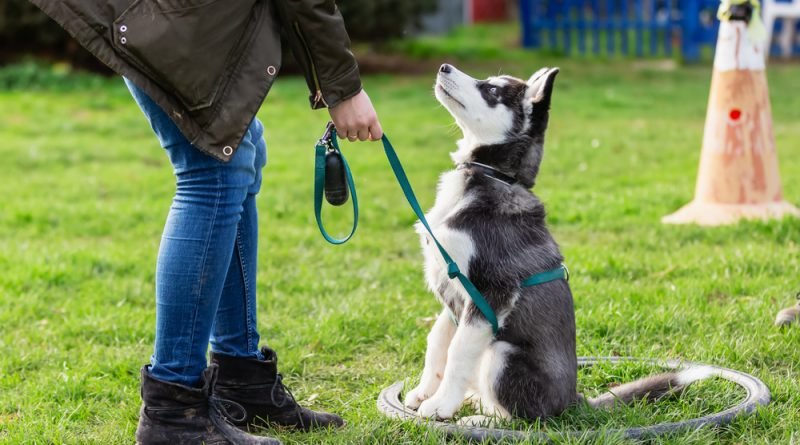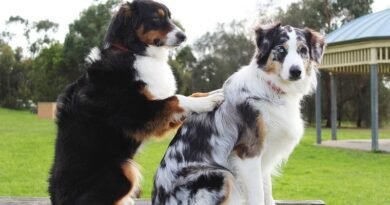How to Train Your Dog to Be Calm around Strangers?
Pet dogs are famous for their loyalty and trustworthiness. Dogs are highly vigilant and stay fully aware of their surroundings, which is great for the security of pet owners. But many of my dog-owner friends worry about their dog’s aggressive behavior in public.
Some dogs take their job too seriously; while jumping, barking, and running in circles are common in front of strangers, some dogs bark and growl at everyone, including guests, delivery people, friends, and even family members. Pet owners need to take some action and train these furry friends to behave well in public so that they don’t harm anyone.
Today, I have planned to share some tips with all those dog owners who do not know how to fix this issue.
Know the Cause
Before moving further, you should first assess the cause of aggressive behavior in your puppy. Commonly, this behavior occurs due to anxiety.
Lashing and biting are two prominent activities that show anxiety in dogs. This anxiety can even lead to aggression and other problems. Therefore, take an instant action to control the level of anxiety. Some useful tips are here for you:
- Stay Calm
Do you know that these beloved friends can sense you? Yes, whatever you are going through, your dog knows it well. So, never panic, even if your dog shows unusual behavior.
Firstly, try to calm down. You can use multiple techniques for this, like mediation, relaxing by focusing on every body part, breathing in and breathing out, etc. If you are out of anxiety, you are in a better position to control your dog.
- Distract
Outsmarting the dog is useful in dealing with these unusual situations. Though many pet owners do not like it, it is important to keep your guests and the dog safe. Luckily, distracting small dogs is quite easy. You can use toys or play their favorite game. These days you can easily order dog toys online.
However, be sure to buy the toy as per the age and size of your dog. I am the lucky owner of a 3 amazing Goldendoodles, and yet I always buy different toys according to the size of my dogs as Goldendoodle sizes vary drastically, even though the breed is the same.
- Isolation
I understand that many of you will not prefer to isolate your dogs. But it is a necessary step. What will you do if the dog is not trained at the moment and some special guests are coming? This technique can work as a quick fix to this issue.
However, we don’t recommend it as a long-term solution. Isolation should only be used as a temporary fix in extreme cases. Once the immediate situation is over, you should work on assess the cause of aggression and treat it accordingly.
Multiple Causes of MisbehaviorÂ
There can be several factors that are responsible for this unusual behavior. You should have ample knowledge about this behavior and its causes. Some of the possible factors may include:
- Mistreatment
Everyone knows how a vast majority of dogs are being treated in public facilities. If your dog is a rescue, the chances of misbehavior are higher. Unfortunately, many of them are mistreated or abused several times. Therefore, dogs do not trust strangers easily. To overcome this, you need to develop the confidence of your dog and build trust.
- Illness
If your dog is sick, it will never be comfortable with strangers. Therefore, forcing your dog to deal calmly with strangers is not good. Let the dog become well, then restart your training.
- Breed
One important factor to consider when training a dog is its breed-specific personality traits. For example, Herding breeds like Australian Shepherds or German Shepherds are bred to instinctively control and herd livestock, so they may be more difficult to train than breeds that were originally bred as companions, such as the Cavalier King Charles Spaniel.
German Shepherds are particularly known for their intelligence and strong working instincts. They are often used as police or military dogs because of their willingness to please their handlers and natural ability to learn complex commands.
However, this intelligence can also make German Shepherds difficult to train if owners do not provide consistent leadership and reinforcement. However, German Shepherd puppies are more pliable and therefore training should begin from an early age.
It’s essential to consider the breed-specific traits of the dog before jumping into training.
Teach them to Greet
Though dogs cannot speak our language, they can easily associate our emotions with words. This may require some time, but it works in teaching your dog to greet strangers. Let your dog know how to greet the delivery persons, guests, and people on the road. Additionally, dogs also copy their owners. So, be vigilant in the way you behave because your dog is likely to copy you.
- Use Positive Reinforcement
Positive reinforcement is a common method used by many dog trainers. This method is the opposite of punishing your dog. Here, you give rewards to the dog to encourage them to behave in the desired way.
Now, you should choose the rewards that your dog likes the most. Some common rewards include car rides, a new toy, playtime, treats, etc. Some more tips for positive reinforcement include:
- Make sure that your dog is attentive.
- There should be consistency.
- Give rewards only when you notice good behavior.
Use the LeashÂ
Unfortunately, many dog owners consider leashing the dog as the first and only option. But, in my opinion, this should be your last option. If you have tried out every other thing and nothing seems to work, you can try leashing for some time. But do not make a habit, use it only when absolutely necessary.
Keeping your dog on a leash is a tough decision, and not one that should be used often. Just like isolation, you can leash your dog only in dire circumstances i.e., when there is a threat to someone’s safety.
Bonus Tip:
Try to avoid leashing as much as you can. Put all your efforts, connect with the dog’s community, and ask the experts about more training tips. If you are tired of all the tricks, use the leasing tactic instead of becoming frustrated in front of the dog. Also, give some break to your dog’s training and then restart it with full focus.
Wrapping It Up
So, training the dog to stay calm in public is not easy. It requires consistent efforts and dedication. But, once you do it successfully, you will not find it harder to take your dog to parties, parks, and gatherings.
For this, you can use tactics like staying calm, understanding the cause, isolation, positive reinforcement, and leashing. But never force anything. Use the trial-and-error method to see what works best on your dog.
Since every dog is different, you need to give time and understand the tactic that gives the best results in less time.




